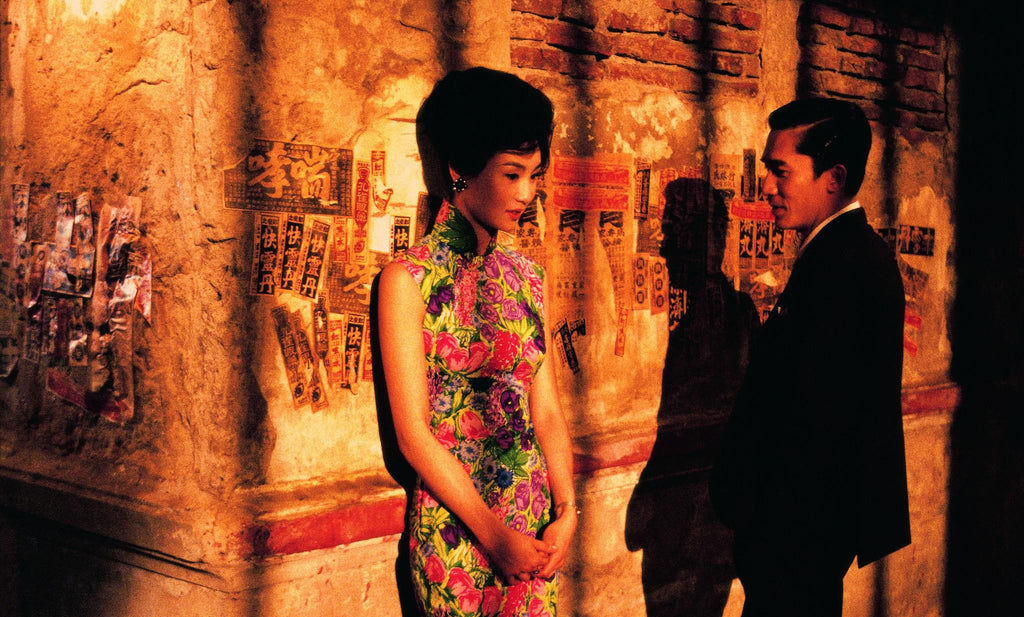THE QIPAO EDIT
The ‘Qipao’ Edit is a contemporary take on the traditional Chinese Qipao dress. It’s a hallmark collection within the SKYLENCE brand and one that we’re continuing to grow.
Each design within our Qipao Edit incorporates a different aspect of Chinese culture, from the ‘Three Friends of Winter’ embroidery to homages to the hibiscus flower, commonly known as the Rose of China.
The ‘Qipao’ – also known as the cheongsam - is a traditional Chinese dress characterised by a high-neck and close-fitting silhouette. Our Qipao Edit includes mini dresses, a 2-piece dress and shawl set, along with structured fitted dresses.
The History of the Qipao
Qipaos may seem like they’ve been around for centuries, but they originally originated from the long Manchurian costumes worn during the Qing Dynasty (1644 – 1912) when Manchurians were in power over the country.

The qipao most people are familiar with became popular amongst Chinese women in the 1920s as a feminine closet staple that would define contemporary oriental clothing. This silhouette is an evolution from the inspiration of the robes worn during the Qing Dynasty, adding a high collar, and creating a figure-hugging silhouette.

The dress is known as the “qipao” in Mandarin and the “cheongsam” in Cantonese. It’s the quintessential design that has come to define the concept of Chinese elegance. Today’s qipaos – and many of our designs at SKYLENCE – continue to incorporate the embroidery, beading, and floral motifs of the original imperial qipao dresses.
What makes the qipao significant is that it makes the evolution of women in society after the collapse of imperial rule. It’s evident in the silhouette’s change from its long imperial robes, designed to conceal a woman’s body, to the more seductive style that celebrates women’s curves.
 (Maggie Cheung (left) and Tony Leung in a still from In the Mood for Love)
(Maggie Cheung (left) and Tony Leung in a still from In the Mood for Love)
Set in 1962, In the Mood for Love is a delicate ode to the qipao in its heyday, when they could be seen everywhere on the streets of Hong Kong and Shanghai.
Although the garment traces its roots to the turn of the 20th century, in a time of immense political and cultural upheaval in China, the evolution of the qipao reflects the newfound freedom of women through the 1920s to 1960s, from the flappers of the Art Deco era to the expansion of women in the workplace.
SKYLENCE has taken up the task of evolving the qipao to the next stage of its story, adapting its stiff collar and short sleeves to suit the lifestyle of a 21st-century woman. Our Qipao Edit is designed to fit into every aspect of your life, from elevated workwear to occasion wear for weddings, formal events, and cocktail parties.
Creating the Modern Qipao
At SKYLENCE, we’re inspired by the coupling of East and West. We strive to bring an oriental flair to European fashion and reinvent heritage silhouettes for the modern era.
This collection is a new take on the qipao for the modern woman with a distinctive European twist. John Galliano is one of the most influential designers in recent decade and one of our muses for this collection.
Vogue’s Anna Wintour named John Galliano’s March 1997 collection her favourite of all time. Why is this significant? Galliano’s 1997 Dior collection incorporated Dior’s Parisian DNA into traditional oriental garments. It introduced the qipao to a Western audience through the lens of French fashion.



Building on this inspiration and using masterful tailoring with intricate design elements, SKYLENCE’s Qipao Edit continues the Chinoiserie Chic tradition with our own contemporary fashion take.
You can discover and shop our Qipao Edit here.
